Our tanks can shoot guided missiles - good, but not always
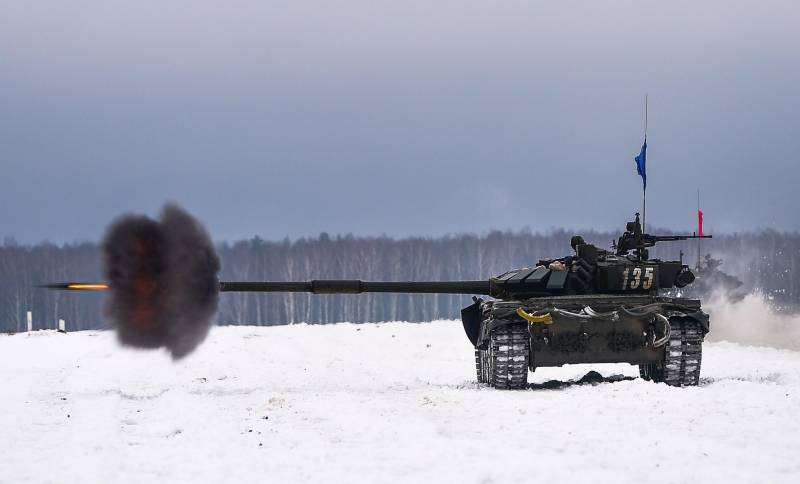
Perhaps there is not a single person who, although somehow interested in armored vehicles, albeit with the help of television programs, has not heard about one of the main advantages of our tanks. This, of course, is about the possibility of firing guided missiles through a cannon barrel.
In dry theory - very accurate weapon, capable of hitting the enemy at great distances. And then there are videos from the special operation zone that constantly come up, where tankers hit the enemy with rockets with enviable accuracy. Advertising is just perfect, but are there pitfalls?
Here we will not talk about the indicators of armor penetration of missiles, their resistance to interference and other narrowly focused moments that can organize a mess even in the brightest head. The message is more prosaic: low accuracy of hits, entirely dependent on the skills of the shooter.
Semi-automatic - good, but not very
Get into the deep jungle stories we will not be guided weapons. It is enough to know here that in the Soviet Union, and it is the legacy of this country that we are using now, there were three main tank missile systems for the 125-mm caliber: "Cobra" with radio command guidance, "Svir" and "Reflex" - both with missile guidance along the laser beam, but with some differences in terms of control equipment. The latter, by the way, is now massively installed on all our modern tanks, including both the T-72B3 and the T-80BVM with T-90 modifications.
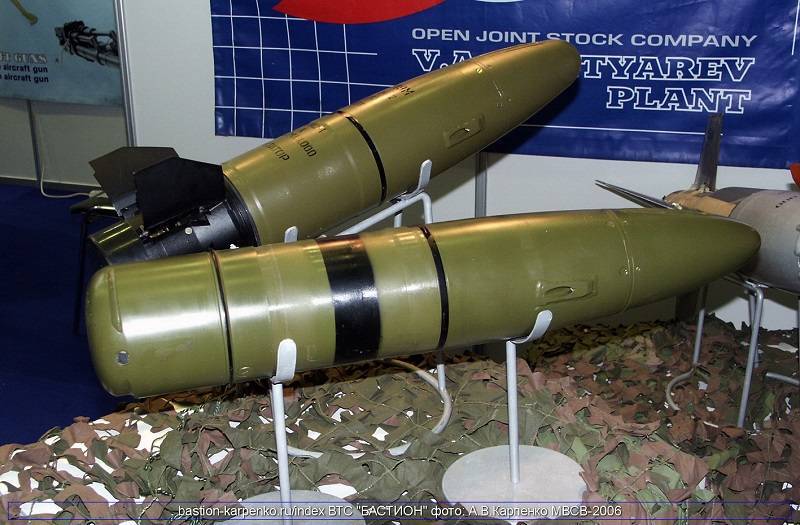
Guided missile 9M119M "Invar" missile system "Reflex" tanks T-80U, T-72B3, T-80BVM and modifications T-90
The differences between the complexes are a wagon and a small cart. However, they are related not only by the Soviet past, but also by the principle of semi-automatic missile guidance.
To understand what kind of magical semi-automatic is, just look at some first-generation missile system. For example, "Baby" will fit - an ancient Soviet ATGM, which, they say, is still alive in some countries, shooting at tanks and other equipment.
Before modernization, there were no aiming systems familiar to us at all. After the launch of the rocket, the operator had to independently control its position in space, trying to give it the correct flight path. At the same time, it was possible to conduct this jet guided projectile even through binoculars, if the proper skills were available. But in the kit there was a monocular sight with an applied aiming mark.
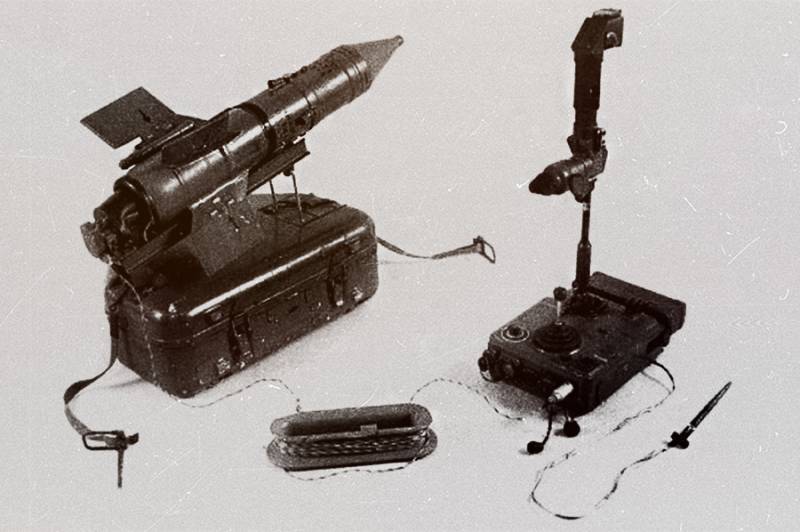
9M14M "Baby" with a monocular sight and joystick control
Shooting and hitting targets from the Malyutka and similar complexes was extremely difficult and required considerable professionalism from the operator. Here, as they say, it's easier to teach a hare to smoke. Exaggerated, of course.
Semi-automatic in this regard greatly facilitated life.
A feature of anti-tank missile systems with semi-automatic guidance, whether it be our tank "Refleks" or some portable and transportable American "Tou" with "Dragons", is that the system independently controls the position of a flying missile in space and does not allow it to "walk " on both sides.
The operator is only required to keep the aiming mark on the target - the automation itself will bring the guided projectile to the specified trajectory. In general, the feeling that you control a mad horse with a joystick, as with the "Baby", will definitely not be there. But, despite this unconditional progress, no one canceled the lion's share of manual work in guidance.
In fact, even in such a “lightweight” mode, aiming a missile at a target, especially if it does not at all crave its own destruction and maneuvers, is not an easy task. Here, it is impossible to do without skills honed by repeated training and brought to automatism. And most of them, let's say, intuitive order.
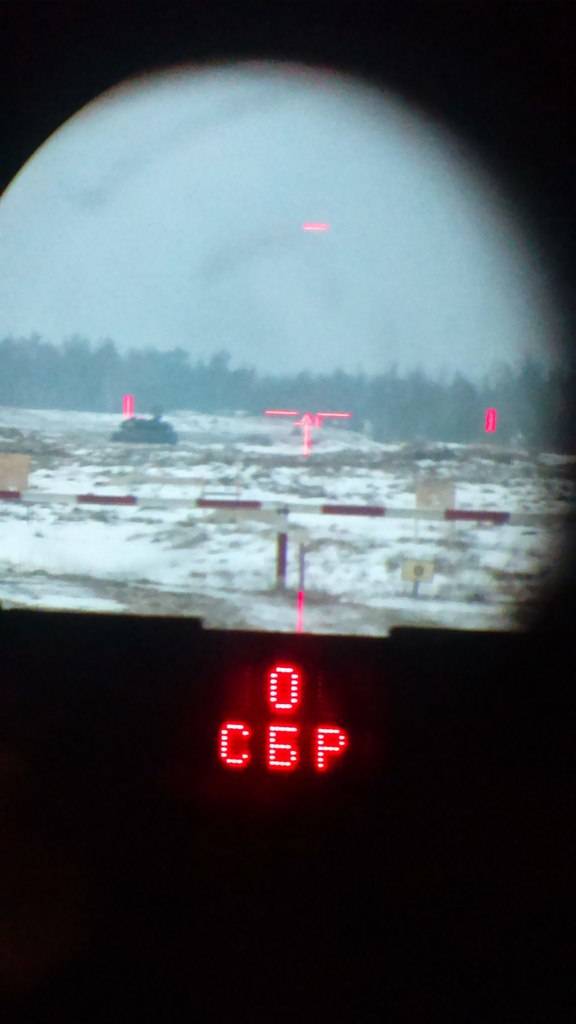
View from the optical channel of the Sosna-U gunner's sight of the T-72B3 tank. Through it, as well as through the thermal imaging channel, the missile is guided to the target
In practice, this means that the gunner-operator, since we are talking about a tank, needs to have a very developed eye in order to determine the approximate distance from a flying missile to a target in the eyepiece or on the display of the sight. Take into account the speed of the missile and its ability to maneuver, as well as closely monitor the movement and maneuvers of the target and, if possible, predict its actions in this regard. And all this, taking into account the not very convenient location of the governing body in the person of the notorious "cheburashka", which is also very oaky and requires effort when interacting with it.
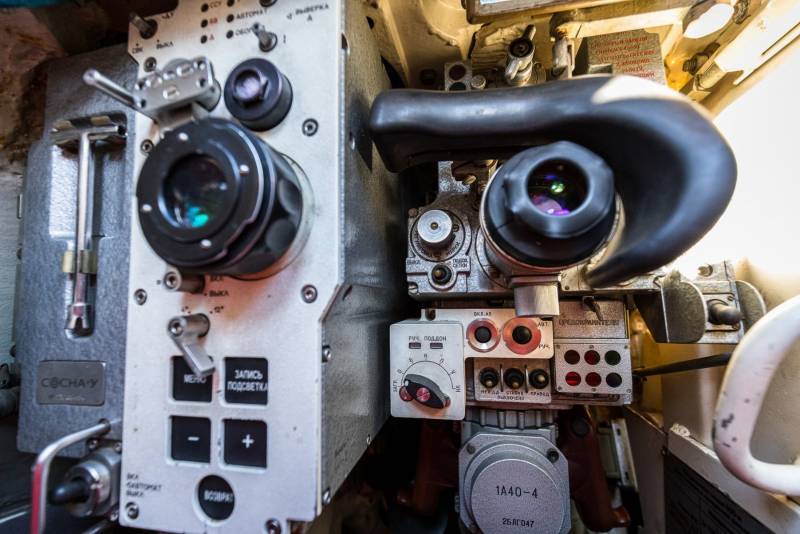
On the left is the sight "Sosna-U" with the eyepiece of the optical channel. On the right is a standard 1A40 optical sight. Under the eyepiece and the control panel you can see the control of both sights - the same "cheburashka"
In general, without intensive practice and exercises on simulators, the presence of a guided missile in the tank's ammo rack does not give great advantages. And, on the contrary, very experienced gunners-operators are able to turn a tank into a sniper weapon for shooting tanks at huge distances - up to 5 km, and even with all sorts of somersaults like driving a rocket "slide" to hit armored vehicles in the upper hemisphere (roof).
Problems of the average crew
Speaking about professional tank gunners who feel a flying missile as an extension of their hand and can easily hit an enemy tank at a conventional 4-5 kilometers, we must dwell on one point - they are in the minority. Therefore, you need to rely on the data of average tank crews who have been trained according to general standards.
For example, similar studies were carried out back in the 80s of the last century in the USSR. As part of these experiments, they tried to understand how effective the guided armament of a tank would be in the hands of a crew that was not drilled, but who had undergone standard army training, if fire was fired from a moving tank at an average speed of 15 km / h at maneuvering targets at a distance of about 4 km.
The maximum probability of hitting a rocket from the first shot was estimated at 68,4% at an average target speed of about 16 km / h. The higher the speed of the target and the intensity of its maneuvers, the lower the chance to hit. As part of the study, the minimum probability was estimated at 59 percent.
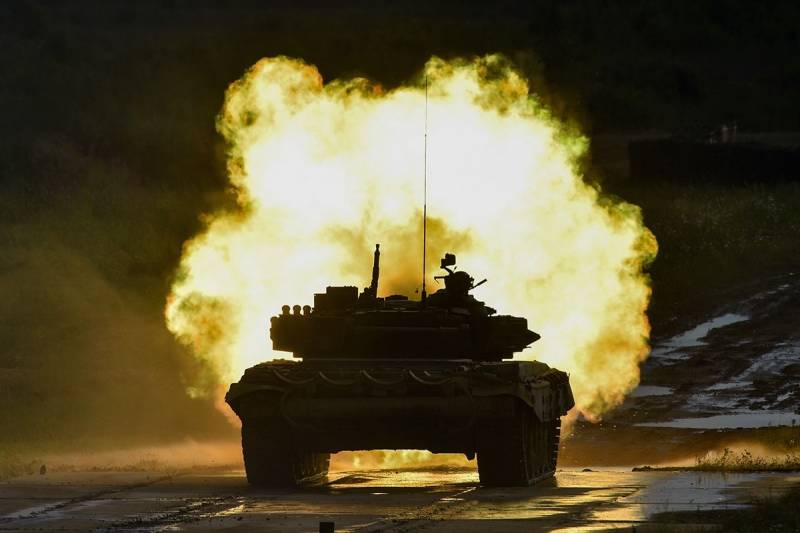
And this is in greenhouse conditions. In battle, when the crew is poisoned by the combustion products of gunpowder, tired and in a state of extremely strong tension and stress, these indicators can be safely divided by 2 or even 3.
But here we can say that the USSR has been gone for more than thirty years, and much has changed over the years. There is nothing to argue here - a lot has changed, but the fact that you need to be able to control tank missiles and maintain the entire sighting system of a tank is clearly illustrated by 2020, when the next review of the combat capabilities of equipment took place in Alabino.
In short, guided missiles were fired from T-90A, T-80U and T-80UE-1 tanks at a fixed target at a distance of 2–400 meters.
Each of the vehicles fired four shots at the target and ... hit it only once. The shooting efficiency was at the level of 25% - each tank did not hit the target from one to two times due to guidance errors, probably on the part of the gunner-operator, which military expert Viktor Murakhovsky angrily wrote about on his social network. The rest of the misses, in his own words, related both to technical issues in terms of the failure of the fire control system and weapon stabilizers, and to the failure of the missile guidance.
In contrast, the T-72B3 tanks, most likely delivered straight from Uralvagonzavod, fired at targets with virtually XNUMX% probability, which only once again confirmed the importance of crew professionalism and proper technical training of vehicles.
But these, again, are exceptionally greenhouse conditions, when the crew knows their business, and the target stands motionless at a short distance and is waiting for a hit with open arms.
Electronics sometimes saves
In fact, the situation is not as depressing as it might seem at first glance, since our modern tanks in the face of the T-72B3, T-80BVM and the T-90 modification are equipped not only with the notorious thermal imagers. The thermal imaging digital channel made it possible to introduce an automatic target tracking system into the sighting systems of tanks.
Its main advantage is the minimization of human actions in the process of preparing a shot and aiming at a target. Continuously processing the video signal coming from the thermal imaging camera, the system isolates the target from the general background by its contrast and automatically accompanies it, keeping the aiming mark on it. Also, in accordance with the maneuvers of the target and the movement of its own tank, the turret automatically rotates, and the gun changes the angle of declination to ensure the desired trajectory of the shot.
This really helps not only when firing conventional projectiles, but also guided missiles. The gunner-operator does not need to constantly manually hold the aiming mark on the enemy in order to guide the rocket along the desired trajectory, which has a positive effect on the effectiveness of the fire. So, according to generalized data, the accuracy of guidance for all types of ammunition increases by about three times, and in some situations increases by 45 times.
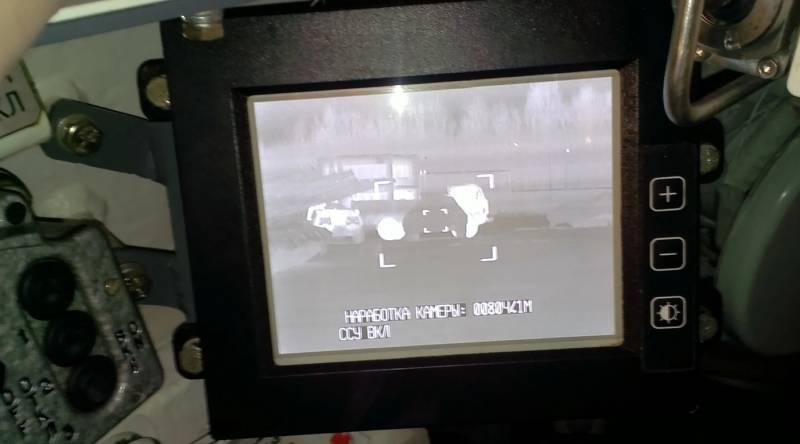
Image from the Sosna-U thermal imaging channel. Through it, the target tracking machine works
However, it is impossible to make some absolutely universal thing out of a target tracking machine. With regards to the conduct of guided missiles, it has significant drawbacks.
It is perfect for firing in an open field, where there are no natural obstacles in the form of vegetation, uneven terrain, as well as artificial - buildings and structures of various kinds. His task is simply to lead the target. And he will lead her, even if she briefly disappeared from view, driving behind some barn. The system will simply continue to move the sight in inertial mode until the enemy reappears in the field of view and it is re-captured in the sight.
But he cannot “understand” when it is necessary to make a rocket maneuver. In situations where it is required to drastically change the trajectory of the missile's flight - to go around the same obstacle or to let it "slide" - manual targeting is still required.
It is also worth taking into account that the machine works exclusively through a thermal imaging signal, so there will be moments when it simply cannot capture a target due to its low contrast or fuzzy silhouette, and far from being as rare as we would like.
In general, it’s good that there is such a thing, but it can’t always help out.
Conclusions
Still, the presence of guided missiles in the ammunition load of our tanks cannot be called completely useless. A skilled gunner can do a lot of things with this weapon - after all, it’s a “long arm”, after all. Any armor-piercing projectile will outperform in terms of firing range, and in terms of accuracy too.
But the strong dependence of the effectiveness of missiles on the skills, physical and psychological state of the user cannot definitely put them in the rank of high-precision weapons. A person is not a robot, and is subject to stress and fatigue, and this will be with one hundred percent probability in a real combat situation. And you should not forget about poisoning with powder gases during intensive shooting. All these factors will definitely affect the accuracy of hits, which, even in "greenhouse" polygon conditions, is not always one hundred percent.
The introduction of such electronic components as an automatic target tracker, on the whole, changes the trend for the better: the number of hits on the enemy increases, and, finally, there is a real possibility of firing missiles on the move. It, by the way, was also available without automation - the same "Reflex" allowed and still allows it to be done - but only formally, since it is very difficult to get from a moving tank with a rocket led by the operator. However, it cannot be made universal. Doesn't always help.
In general, as Aleksey Kuznetsov, an expert at Military Review, said, there is a rocket in the ammunition load - well, that's good. And we will add: no rocket is not a big deal either.
Where to move on in terms of the development of guided weapons on tanks, if it is relevant at all, our military and designers, in principle, have an idea. This direction is towards homing missiles. Prototypes and pre-series samples of these products under the code "Falcon" have already passed some tests and, if they nevertheless go into series, they can be used on all our modern tanks with appropriate refinement.
But already after the completion of a special military operation, since, as they say, they don’t change horses in midstream: making such profound changes in the design of vehicles in conditions of forced production and limited financial opportunities will be more harmful than useful.
Information